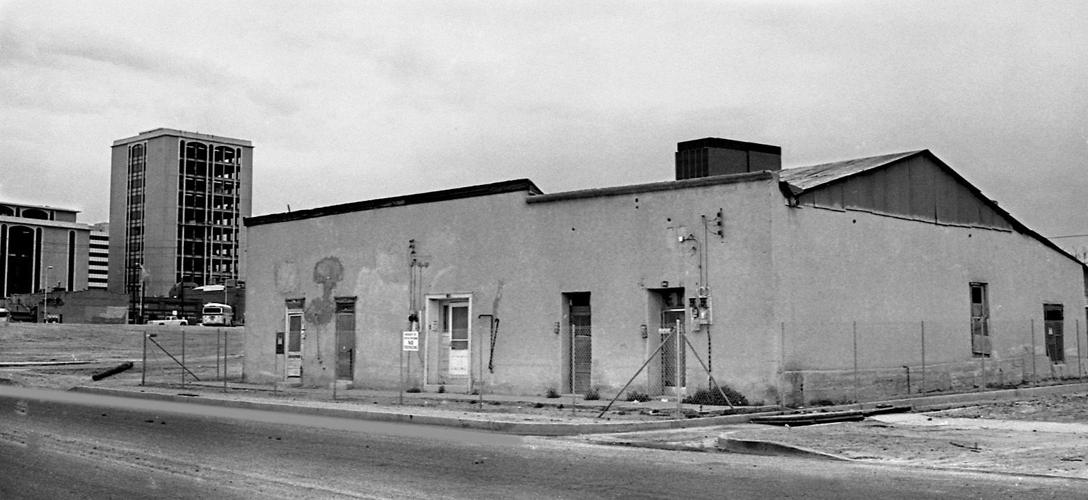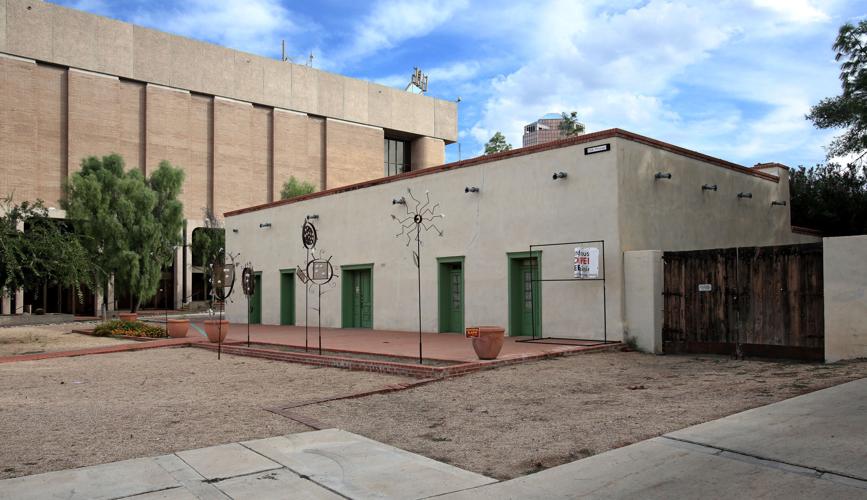A year ago, Borderlands Theater, our home-grown thespian group, produced a series of performances on the grounds of downtown’s Tucson Convention Center. “Barrio Stories” was aimed at “reclaiming” the expanse of cement and bricks, dried-up fountains and pedestrian-less walkways that sit atop a once-vibrant barrio.
Borderlands retold the stories of the ethnically diverse and multigenerational families that called the old barrio home before the city and its well-funded commercial allies bulldozed the homes and businesses, silencing the barrio’s life and history.
Now the theater group continues to reclaim an important and symbolic piece of that lost space as the new occupant of the Sosa-Carrillo-Frémont House, the late 19th-century Sonoran-style row house that is wedged between the TCC Music Hall and the Arena.
Borderlands will use a portion of the historic house for its offices, rehearsals and community gatherings. The Arizona Historical Society, which has owned the house at 151 S. Granada Ave. since the early 1970s, will continue to use it for exhibits.
“Reclaiming the space is important because it recognizes our work,” said Milta Ortiz, a playwright and Borderlands’ marketing/outreach coordinator. Her husband, Marc David Pinate, is Borderland’s producing director.
Borderlands’ move to the Sosa-Carrillo-Frémont house is meaningful. The house was the focal point of the struggle to retain a sliver of the disappearing barrio and Tucson’s historical Mexican identity, which over the years has been washed over.
When urban renewal destroyed the heart of the Mexican barrio, from Cushing Street to Broadway, and Church Street almost to Interstate 10, the demolition spared only a few buildings: the old train depot off of West Congress Street, the Samaniego House on Church Street, and the Sosa-Carrillo-Frémont House. But the Sosa-Carrillo-Fremont House nearly was lost to the wrecking ball.
What saved it was its supposed link to John C. Frémont, Arizona’s fifth Territorial governor from 1878 to 1881, and a controversial military figure during the U.S.-Mexico and Civil wars. Frémont, who was pressured to resign as the territory’s governor because he rarely was in Arizona, had slept in the Sosa-Carrillo house, according to the legend. However, there is no record of him living in the house, or spending a night, although he did rent the house where his daughter lived for several months in 1881.
For the barrio residents, the house was named for Leopoldo Carrillo, a prominent Sonoran-born Tucsonan who built it in 1880 after buying the land from the Tucson pioneer family of José María Sosa. Carrillo had built a recreation garden on South Main Avenue and helped create the territory’s first school district, today’s Tucson Unified School District. The house remained in the Carrillo family until 1968 when the city condemned it.
But historic preservationists, who lived outside the barrio, campaigned to save the house. The Arizona Historical Society retained it and in 1971 renamed it the John C. Frémont House, la Casa del Gobernador.
That was a slap in the face. The following year, then-first lady Pat Nixon came to Tucson to dedicate the misnamed house.
In 1992 the Historical Society slightly rectified the error by giving the house its current name.
The current use of the Carrillo house was prompted by the Historical Society, which invited Borderlands to share the house, said Ortiz. The state agency is supportive of Borderlands’ efforts to tell local stories, Ortiz added.
Borderlands was born in 1986, an outgrowth of a Tucson theater troupe known as Teatro Libertad, which had formed in the early 1970s as part of the national Chicano rights movement. Libertad and later Borderlands, launched by Barclay Goldsmith and others, staged performances reflecting the experiences and stories of Chicanos and Mexican-Americans.
The move is another step in Borderlands’ evolution but, as a nonprofit, the group continues to struggle for financial support. On Tuesday, Borderlands welcomed its supporters to its new digs in the old house and announced that Borderlands needs an immediate $20,000 to get it through the summer. Funds from two national grants will arrive later in the year, Ortiz said.
Borderlands launched a crowdsourcing fundraiser: https://www.gofundme.com/keep-borderlands-theater-open
Ortiz is optimistic that Borderlands’ supporters and the wider community will keep its doors open, help it grow and keep theater prices low so that the presentations remain accessible to the public.
“Then everybody can come to see theater,” Ortiz said.






